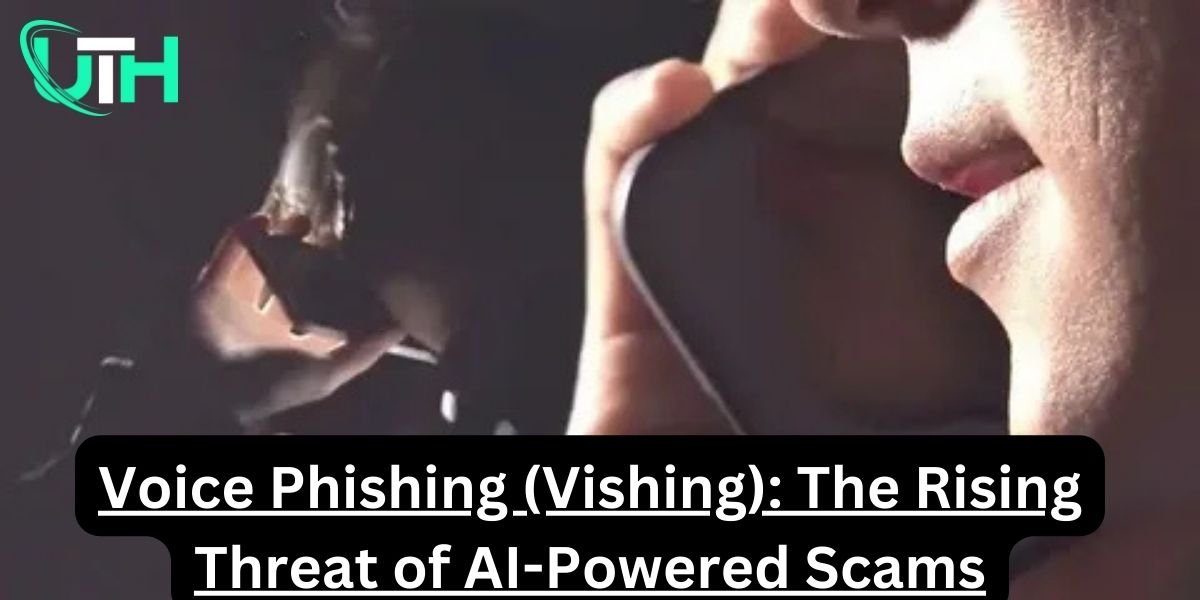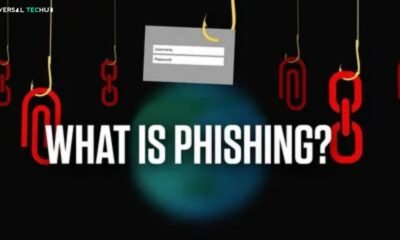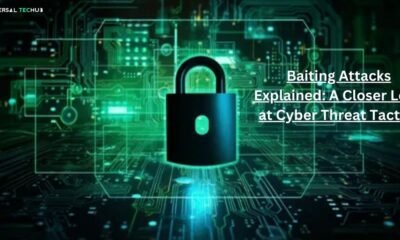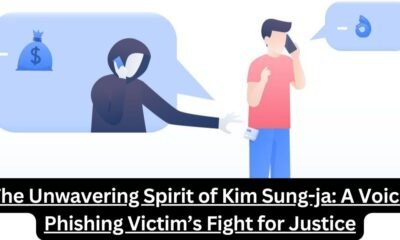Cybersecurity
Voice Phishing (Vishing): The Rising Threat of AI-Powered Scams

Introduction
In the digital age, cybercriminals have adapted their tactics to exploit human psychology and trust. Voice phishing, also known as vishing, is one such method that uses phone calls to manipulate individuals into divulging sensitive information. Unlike email-based phishing, which relies on deceptive emails, vishing attacks use voice communication to create a sense of urgency and credibility.
With advancements in artificial intelligence (AI) and deepfake voice technology, vishing scams are becoming more sophisticated, making them harder to detect. This article delves into the world of voice phishing, explaining what it is, how it works, real-world examples, and ways to protect yourself.
What is Voice Phishing?
At its core, vishing is a phone-based scam. Attackers impersonate trusted entities, such as banks, government agencies, tech support, or even family members, to create a sense of urgency or authority. They then use carefully crafted scripts and psychological tactics to persuade victims to provide sensitive information. This information can include anything from bank account numbers and social security numbers to passwords and PINs.
Voice Phishing Attacks: How They Work
A typical voice phishing attack follows these steps:
- Pretexting: The scammer researches the target and gathers information from social media, public records, or data breaches.
- Caller ID Spoofing: Attackers manipulate caller ID to display a trusted name or number.
- Social Engineering: Using fear, urgency, or authority, the scammer convinces the victim to take action.
- Data Extraction: The victim unknowingly provides sensitive information, such as bank details, login credentials, or security codes.
- Exploitation: The stolen information is used for fraud, identity theft, or unauthorized financial transactions.
Types of Voice Phishing Attacks
1. Bank Impersonation Scams
Scammers pose as bank officials and claim that the victim’s account has been compromised. They then request account verification details or OTP (One-Time Password) codes.
Example: A victim receives a call from “Bank XYZ,” stating that fraudulent transactions were detected on their account. The scammer asks for a PIN to “secure the account,” leading to financial theft.
2. Government Agency Scams
Cybercriminals impersonate IRS, FBI, or social security officers, warning the victim about unpaid taxes, legal issues, or benefits suspension.
Example: “This is the IRS. You owe $2,500 in back taxes. Failure to pay immediately will result in arrest.”
3. Tech Support Fraud
Victims receive a call from “Microsoft,” “Apple,” or “Google,” claiming that their device is infected with malware. The scammer tricks them into installing malicious software or providing login credentials.
4. AI Voice Phishing (Deepfake Voice Attacks)
With AI advancements, scammers use deepfake technology to mimic the voices of CEOs, family members, or government officials.
Example: In 2019, criminals used AI to impersonate the CEO of a UK-based energy firm, tricking an employee into transferring $243,000 to a fraudulent account.
Real-World Examples of Voice Phishing Scams
Case Study: AI-Powered Voice Scam in the UK
In one of the most notable AI-driven vishing attacks, hackers used deepfake audio to imitate a CEO’s voice, directing an employee to make an urgent wire transfer. The employee, believing it was his superior, transferred over $240,000 before realizing it was a scam.
Case Study: COVID-19 Scam Calls
During the COVID-19 pandemic, scammers posed as health officials and WHO representatives, calling individuals to collect medical and financial information under the pretense of “COVID relief funds.”
Case Study: Vishing in Call Centers
A major breach in 2020 saw criminals infiltrate call centers, using social engineering to access high-profile financial accounts. Attackers impersonated customers, using stolen data to bypass security verification.
AI and Voice Phishing: The New Frontier
How AI Enhances Vishing Attacks
- Deepfake Voice Cloning: AI tools can replicate a person’s voice with high accuracy.
- Automated Calls: Scammers use AI-driven robocalls to reach thousands of victims simultaneously.
- Data Mining: AI scans social media for personal details, making attacks more convincing.
Emerging AI Voice Phishing Threats
- CEO Fraud: Deepfake audio convinces employees to authorize transactions.
- Family Emergency Scams: AI-generated voices impersonate loved ones needing urgent financial help.
- Political Manipulation: Fake calls mimic politicians or government officials, spreading false information.
How to Prevent Voice Phishing Attacks
For Individuals
- Verify Caller Identity: Call back using an official number from the organization’s website.
- Never Share Sensitive Information: Banks and government agencies never ask for PINs, passwords, or OTPs over the phone.
- Use Call Blocking Apps: Apps like Hiya, Truecaller, and Nomorobo help detect spam calls.
- Educate Yourself: Stay updated on new scams and train yourself to recognize red flags.
- Enable Multi-Factor Authentication (MFA): Even if attackers get your password, MFA can prevent unauthorized access.
For Businesses
- Employee Training: Educate staff on social engineering tactics and vishing risks.
- Strict Verification Protocols: Implement callback verification for sensitive requests.
- AI-Based Fraud Detection: Use AI-driven fraud detection systems to identify suspicious transactions.
- Monitor Call Logs: Regularly review call logs for any anomalies.
Conclusion
Voice phishing is a growing cyber threat, especially with the integration of AI and deepfake technology. Scammers are becoming more sophisticated, making it essential for individuals and businesses to stay vigilant, verify calls, and implement security measures to prevent fraud. Education and awareness are key to staying ahead of cybercriminals in the digital age.
By understanding the risks and adopting proactive security measures, we can reduce the success rate of vishing attacks and protect our sensitive information from falling into the wrong hands.
FAQs
1. How is voice phishing different from regular phishing?
Voice phishing (vishing) occurs over phone calls, while traditional phishing typically involves deceptive emails or messages.
2. Can AI-generated voices be detected?
Yes, but it requires advanced AI detection tools and training to identify deepfake voices.
3. What should I do if I receive a suspicious call?
Hang up immediately, verify the caller’s identity, and report the scam to authorities.
4. How can businesses prevent AI-powered vishing attacks?
Implement AI-driven fraud detection, train employees, and enforce multi-factor authentication.
5. Are robocalls always scams?
Not all robocalls are scams, but unsolicited calls asking for personal information should always be treated with suspicion.
-

 Phishing attack6 months ago
Phishing attack6 months agoWhat is Spear Phishing and How You Can Identify This Scam?
-

 Social engineering attack8 months ago
Social engineering attack8 months agoBaiting Attacks Explained: A Closer Look at Cyber Threat Tactics
-

 Social engineering attack6 months ago
Social engineering attack6 months agoWhat are Social Engineering Attacks – A Complete Guide to Cyberattacks Prevention
-

 Social engineering attack8 months ago
Social engineering attack8 months agoSpear Phishing Attack: A Targeted Cyber Threat
-

 Social engineering attack8 months ago
Social engineering attack8 months agoWhat is spear phishing attack? A detailed guide
-

 Phishing attack6 months ago
Phishing attack6 months agoWhat Are Phishing Emails? A guide for you
-

 Social engineering attack8 months ago
Social engineering attack8 months agoWhat is spear phishing in cyber security?
-

 Social engineering attack8 months ago
Social engineering attack8 months agoSpear phishing vs phishing: Understand the Risks






















